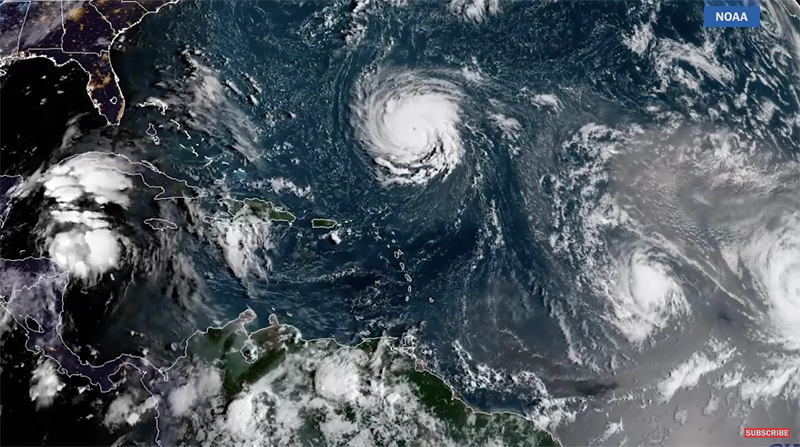
By Jay Croft, Paul P. Murphy and Kaylee Hartung, CNN
As Hurricane Florence approaches the East Coast of the United States, the governors of North and South Carolina have issued mandatory evacuation orders affecting tens of thousands of residents in coastal areas.
The National Hurricane Center upgraded Florence twice Monday, saying the storm will continue to strengthen as it targets the Carolinas later this week.
It could be the most devastating to hit the region in three decades.
(The National Weather Service upgraded Hurricane Florence to a Category 4 storm, meaning it is capable of creating “catastrophic” damage. Florence now has maximum sustained winds of 130 mph, the center said. Courtesy of CNN and YouTube. Posted on Sep 10, 2018.)
Swells up to 15 feet could batter the coast, CNN meteorologist Chad Myers said.
And heavy rains could cause flooding inland for days after landfall.
“This is a real hurricane we have coming,” South Carolina Gov. Henry McMaster said Monday. “We don’t want to risk one South Carolina life.”
A mandatory evacuation order takes effect Tuesday at noon in eight counties along South Carolina’s 187-mile coastline.
Starting then, all roads on I-26 and Route 501 will be directed away from the coast, he said.
Schools, state government offices and medical facilities, including nursing homes in those counties, will be evacuated as well, McMaster said.
He estimated that about one million people will be affected by order, including residents and visitors.
Mandatory evacuations begin Tuesday at noon in these areas of South Carolina.
(South Carolina Gov. Henry McMaster orders mandatory evacuations along its entire coastline saying, “we do not want to risk one South Carolina life in this hurricane.” Hurricane Florence is powering its way through the Atlantic expected to make landfall in the Carolina’s Thursday. Courtesy of MSNBC and YouTube. Posted on Sep 10, 2018.)
In North Carolina, the first mandatory evacuation order was issued at noon, and Gov. Roy Cooper expects more later Monday and Tuesday.
“North Carolina is taking Hurricane Florence seriously, and you should, too,” Cooper said, urging residents to prepare for lengthy power outages after the hurricane comes.
Residents of coastal areas are boarding up homes and packing their bags as residents brace for Florence’s wrath.

















